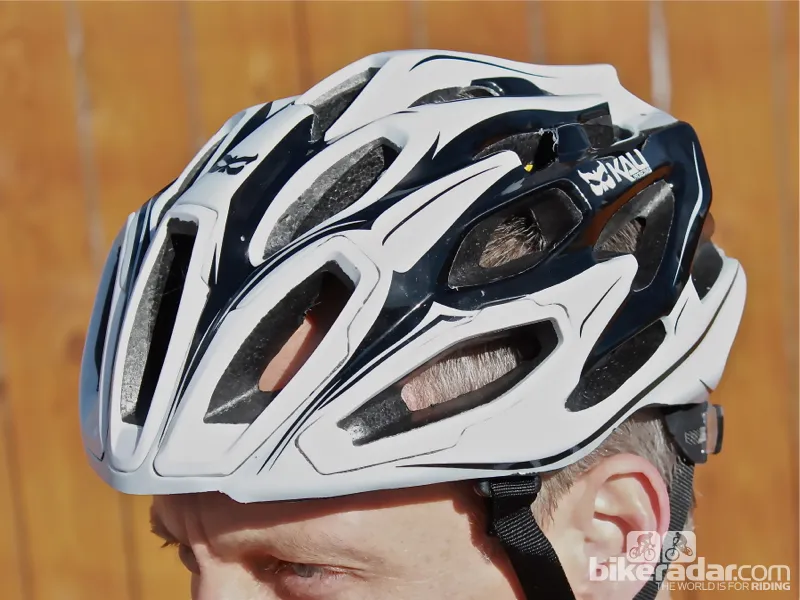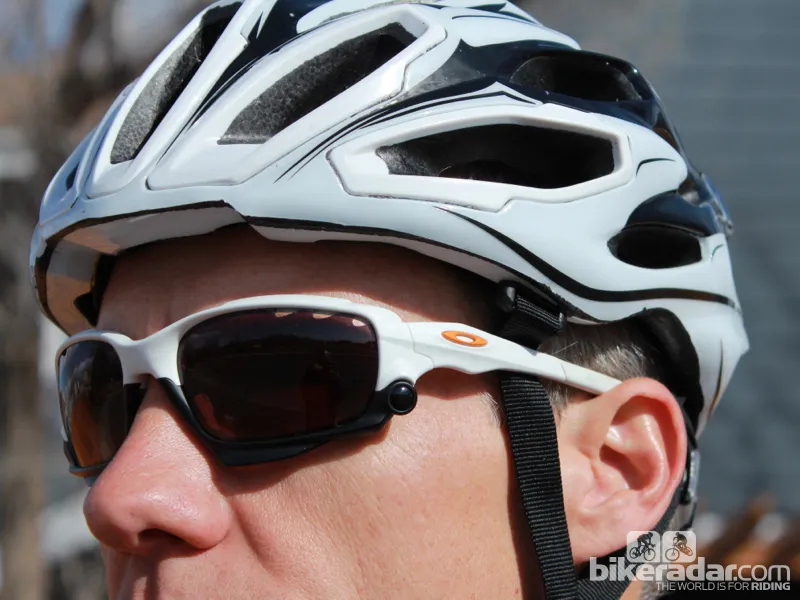The Maraka R from Kali is the road version of the Californian brand's cross-country Maraka; take away the visor/peak from the MTB lid and you have the Maraka R.
With memory foam effectively providing a custom fit, the Maraka R proved to be one of the more comfortable lids we have worn. Kali takes an interesting approach to safety, too, with its 'conehead' technology claims of dispersing some of a crash's impact sideways into the helmet, instead of straight into the head. Our primary complaint with the helmet is the bulbous lump of straps right where the arms of sunglasses sit - otherwise this is a very good helmet.
- HIGHS: Very comfortable, thanks in part to memory foam; reasonably light; good venting; retention system tucks inside helmet for travel
- LOWS: Strap junction interferes with sunglass arms
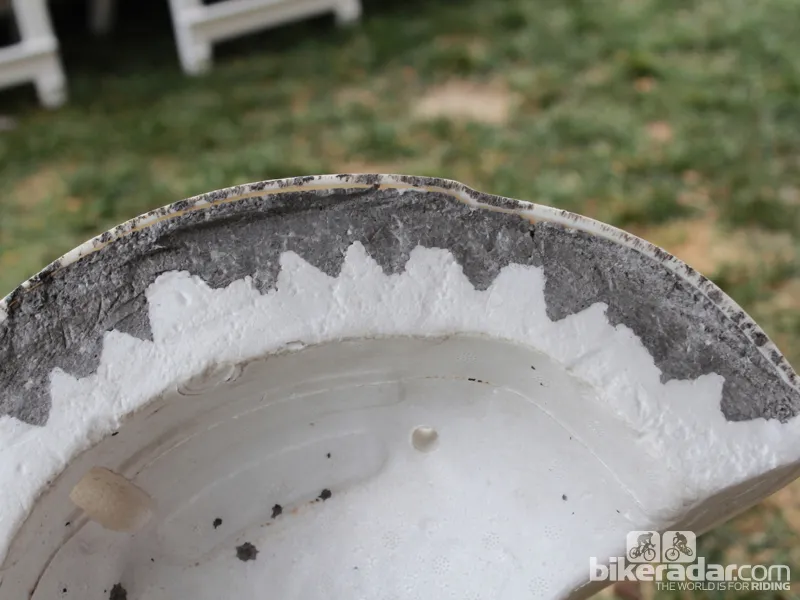
There are three unique things inside the Maraka R.
First, Kali's conehead technology is marketed as 'Composite Fusion Plus'; it mates triangular shapes of softer foam against the harder EPS common in helmets. Kali claims that in event of an impact these conehead shapes crush first, dispersing some of the energy.
Second, Kali dubs its use of yellow memory foam a 'Bumper Fit System.' In our experience, the memory foam compacted down in a few areas, making for a close fit without obvious pressure points.
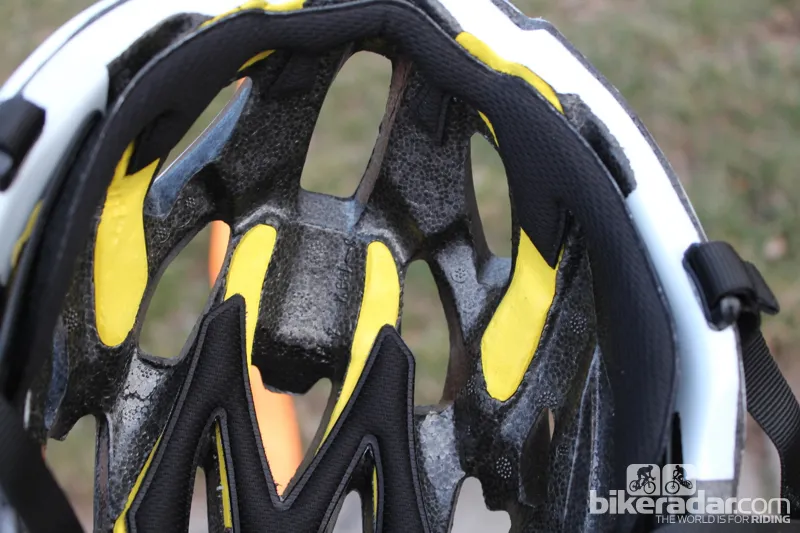
And third, Kali reinforces the forward facing vents. This additional material allows these vents to be larger, improving airflow without compromising safety, the company claims. There are 30 vents in total, including the five 'Supervents' up front.
Taken together, the helmet is a complex piece that takes far longer than the average helmet to produce, said company co-founder Brad Waldron. "We make two every 45 minutes, and the rejection rate is 40 percent," he said.
The two-hand adjustment system is adequate. It doesn’t automatically center the way a knob-driven system does, but the rear retention straps fold in nicely for travel.
We like how the helmet sits low on the forehead, yet doesn’t interfere with vision when you have your head down — perhaps that’s due to the 1cm cut-out in the center. While we normally wear a size medium in most brands, we were able to squeeze a 59cm head into the small/medium lid. With the yellow memory foam compressed in two spots after the first couple of rides, the helmet now fits remarkably well right when we slide it on.
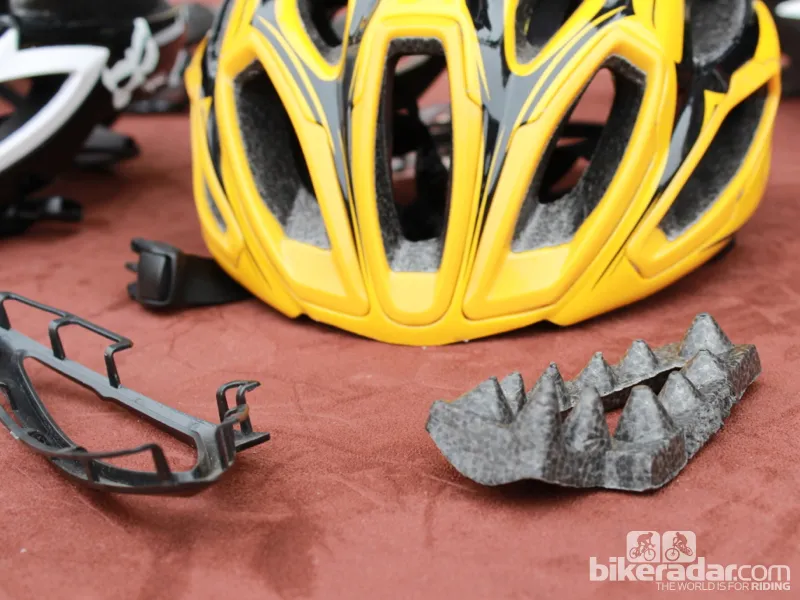
The helmet also comes in extra small/small (50-54cm), small/medium (54-58cm) and medium/large (58-64cm) sizes.
Weight-wise, the helmet is competitive but not an outlier. Waldron says his primary interest is safety, not winning weight-weenie awards. In any event, our small/medium sample tipped the scales at 275g (it has a claimed weight of 300g). To put that in context, helmets in the US$250 / £150 price range, such as the S-Works Prevail or Giro Aeon come in around 220g. A slightly less expensive helmet, the US$135 / £119 Spiuk Dharma weighs 284g (medium/large).
We don’t like the way the helmet straps are secured at the anchor. After wrapping around the anchor, the strap doubles back on itself and is then stitched to the other side for a triple-width sector of strap right where your sunglass arm passes by. For sunglass arms that sit close to the face near the temples, such as the Oakley Jawbone, this isn’t a problem, so long as you put them underneath. But glasses that are wider at the temples, such as Oakley Radar, can’t slide easily under or over without a little adjustment.

Kali's Bryan Mason said this design is due to Australian testing regulations, which require a strap-pull test after impact. "Everywhere else they do the strap-pull test prior [to the impact test], so the anchor has to be set into the mold differently," Mason said.
Still, our issue isn't the location of the anchor but the thickness of the strap right below it.
On the positive side, riders who like to remove their sunglasses and stick them into helmet vents while climbing will appreciate the Maraka's front vents. All our Oakley, Smith and Lazer sunglasses all went in easily and securely.
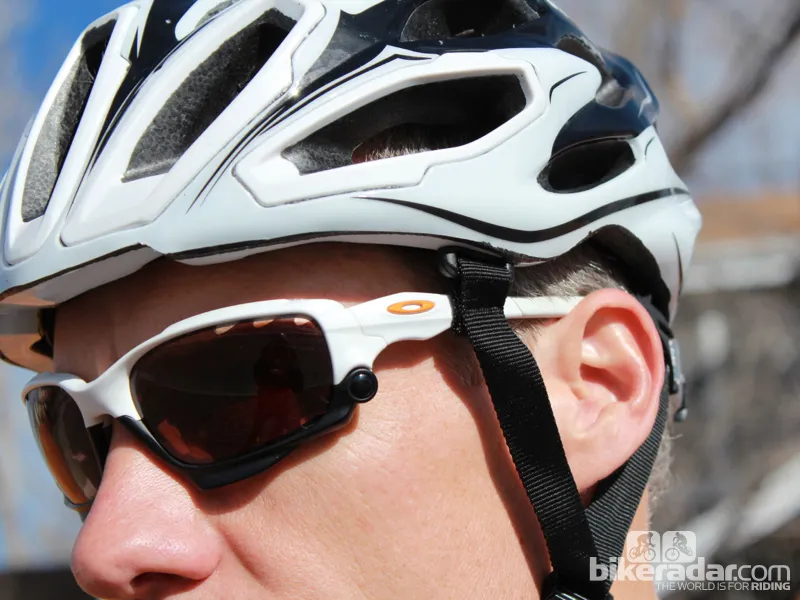
Sunglasses with temple pieces close to the head work better under the straps
Finally, we dig the shape. It's svelte at the back and generally round but with plenty of curves and points. A bowling-ball aero helmet it is not.
Ultimately, a helmet has to be comfortable for you. This Maraka R is definitely worth trying on — and remember, the memory foam will improve the fit even more after a ride or two.
While the Maraka R was Kali's first road helmet (albeit a modified MTB lid), the company now offers two road-specific helmets as well, the US$149 / £120 Phenom, which also has memory foam, and the US$99 / £80 Loka, which does not.
